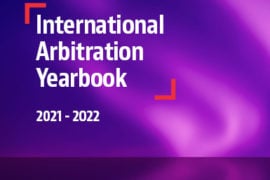SMJ Gen. Constr., Inc. v. Jet Commer. Constr., LLC, 440 P.3d 210 (Alaska 2019)
In May 2016, after entering into a contract for the construction of a restaurant in Hawaii, Jet Commercial Construction, LLC (“Jet”), an Oklahoma corporation, entered into a subcontract with SMJ General Construction (“SMJ”), an Alaskan corporation, to supply materials and labour for construction of the restaurant. This contract contained a broad dispute resolution clause.
When disputes arose, the parties engaged in mediation as required by the subcontract. The parties eventually reached a settlement agreement, which had no dispute resolution provision. In the settlement, both parties agreed to “release the other of and from any and all claims, demands and obligations of any kind arising from the contract of May 2016 ….”
Two weeks after the agreement was reached, SMJ filed suit against Jet in Alaska. SMJ alleged that Jet had concealed facts that made it difficult for SMJ to obtain the releases essential to the settlement, and sought damages and an order setting aside the settlement agreement. Jet filed a motion to dismiss, arguing that, under the subcontract’s dispute resolution provision, SMJ was required to raise its claims in arbitration, and that under the subcontract’s venue clause, any suits on the subcontract must be brought in Oklahoma.
In a perfunctory order, the superior court granted Jet’s motion to dismiss, entered final judgment in Jet’s favor, and awarded Jet attorneys’ fees. SMJ appealed both the order of dismissal and the attorneys’ fees award. SMJ also filed a request for mediation with the American Arbitration Association (the “AAA”). The AAA forwarded the request to Jet, and asked the parties to agree on a mediator. Jet did not respond, and the AAA put the matter on hold.
SMJ then moved for relief from final judgment pursuant to Alaska Civil Rule 60(b), alleging that Jet’s refusal to engage in mediation—after insisting on a strict application of the dispute resolution clause as grounds for dismissing SMJ’s lawsuit—constituted newly discovered evidence, and a change in circumstance justifying relief. Jet conceded that it had not responded, but disputed that its failure to mediate would be considered new evidence under Rule 60(b). Jet contended that SMJ could still demand arbitration and have an arbitrator determine whether mediation was mandatory, or alternatively, could ask a judge in Oklahoma to decide whether Jet was required to mediate.
The superior court denied SMJ’s motion, again without explanation of its reasoning. SMJ filed a second appeal, challenging the court’s grant of Jet’s motion to dismiss, its award of attorney’s fees, and its denial of the Rule 60(b) motion. The Supreme Court of Alaska combined SMJ’s two appeals.
On appeal, the court first considered whether a court or an arbitrator should determine whether the dispute was arbitrable. Under the Revised Uniform Arbitration Act, as codified in Alaska, “the court shall decide whether an agreement to arbitrate exists or a controversy is subject to an agreement to arbitrate.” However, that presumption can be rebutted if the parties have “clearly and unmistakably provided otherwise.” Here, the subcontract incorporated the AAA rules, which allow the arbitrator to determine arbitrability, and could indicate the parties’ intent. However, the court found it need not decide this issue, because the settlement agreement released the parties from all of their obligations under the subcontract.
Under “well-settled principles of law,” when parties have successive contracts addressing the same subject matter, the latter contract supersedes the former contract as to inconsistent provisions. In this case, the parties’ settlement agreement made no mention of dispute resolution, and both parties expressly released each other from “any and all … obligations” under the provisions of the settlement agreement. The court considered this to mean that the settlement agreement released the parties from their contractual obligation to arbitrate disputes. The court also held that this rationale disposed of Jet’s claim that the parties remained bound by the subcontract’s choice of law and venue provisions.
The court reversed the judgment of the superior court, and remanded for further proceedings consistent with its opinion.
A version of this post originally appeared in the July 2019 edition of Baker McKenzie’s International Litigation & Arbitration Newsletter, which is edited by David Zaslowsky and Grant Hanessian.





